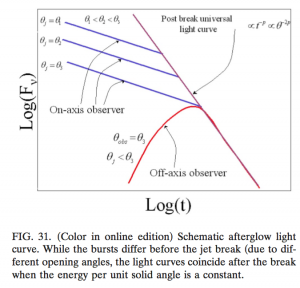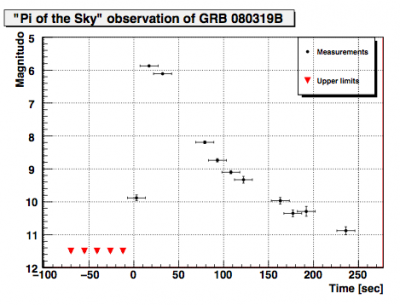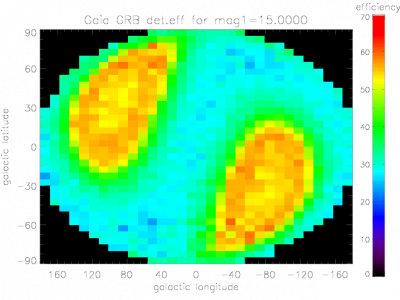Difference between revisions of "Triggers:GRBs"
Jure.Japelj (talk | contribs) |
Jure.Japelj (talk | contribs) |
||
| Line 10: | Line 10: | ||
| − | [[File: | + | [[File:kann_afterglow.pdf|400px]] from [http://ukads.nottingham.ac.uk/abs/2006ApJ...642L..99W Wozniak et al. 2006] |
[[File:GRB08-PI.png|400px]] from [http://arxiv.org/abs/0903.2998 Sokolowski et al.2009] | [[File:GRB08-PI.png|400px]] from [http://arxiv.org/abs/0903.2998 Sokolowski et al.2009] | ||
Revision as of 18:14, 30 March 2011
Short-lived optical transients associated with enormous gamma-ray outbursts GRBs. A catalogue of GRBs is available here. Comprehensive recent review on GRBs and their physics can be found in Piran,2005
- Time-scales of the gamma-ray emission range from a fraction of second to several minutes. This emission is often accompanied by the so-called optical afterglow which can last for several days. Optical afterglows can be therefore detected with Gaia even several days after the GRB trigger.
- Optical afterglow can reach up to few mag in maximum, but the whole range of magnitudes observed at a given time elapsed from the GRB largely differs for the individual events (more than 3 mag). These optical afterglows often display specific color indices with negligible time evolution, which helps distinguish them from other kinds of transients by photometric observations using several color filters.
- Host galaxy of GRB can be visible, but its apprent magnitude is usually fainter than the detection limit of Gaia (about 20 mag). Nevertheless, this host galaxy can often be detected by large ground-based telescopes at the position of the optical afterglow.
File:Kann afterglow.pdf from Wozniak et al. 2006
Detecting GRBs with Gaia
About 5% of GRBs is detectable by Gaia, with the highest efficiency close to the nodes. The main feature visible in the data is steady and rapid decline over AF CCDs. Time sampling at AF CCDs level is 4.4s per CCD. We also demand the transient to be visible in the second FOV (after 105 min).
 from Piran,2005
from Piran,2005
Color-color (B-V vs. V-R) diagram of optical afterglows of long GRBs. All the color indices were corrected for the Galactic reddening. Multiple indices of the same optical afterglow are connected by lines for convenience. Optical afterglows of the ensemble (Simon et al., 2001, 2004) are denoted by open red circles. The mean colors (centroid) of the whole ensemble, including the standard deviations, are marked by the large cross. The outlying optical afterglow of GRB 060218 (closed blue circles) is not included in the calculation of the centroid. The representative reddening paths for E(B-V) = 0.5 mag are shown; they show how much and where the observed data point would move without proper correction (even erroneous correction would thus shift the point only slightly and in predictable direction). Adapted from Simon et al., 2001, 2004, where a detailed information can be found.





